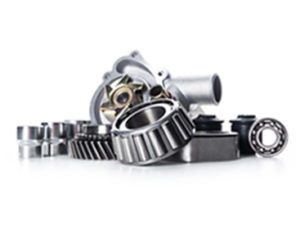Introduction
Include you ever wondered in regards to the myriad supplies from where stuff is usually made we are available across in our own day to day life? The numerous materials which may have exclusive characteristics and which often are used regarding making various articles used in each day life- these elements attract the interest from the young inquisitive minds in anatomist classrooms all above the world.
Right now, let me introduce a person to the world of "CERAMICS".
"Ceramics" are the components which are often misunderstood as elements used merely regarding pottery and attractive objects. However the word ceramic is derived from the Greek word "Keramos", meaning potter's clay-based or pottery, exactly what many people don't realize is that ceramics participate in an important role all over the place you observe and many periods in places that you simply can't.
Besides the particular everyday objects regarding glassware and floor tiles, the ceramics these days are critical in helping computers and other electronics operate, in medical devices with regard to improving people's health and fitness in various ways, inside providing global telecoms, in addition to protecting members of the military and vehicles throughout combat.
Ceramics are usually generally defined as inorganic, non-metallic materials of which are made by powdered chemicals. That they are typically transparent in nature (their atoms are arranged in a systematic manner) and are usually compounds formed in between metallic and non-metallic elements such as aluminum and air (alumina, Al2O3), calcium mineral and oxygen (calcia, CaO), silicon plus nitrogen (silicon nitride, Si3N4), and so forth.
Various "advanced ceramic" goods are manufactured simply by combining high-purity substances into desired shapes then heating all of them to extremely high temps. Great site made can have a lot of desirable properties such as heat resistance, firmness, strength, low electrical conductivity, and exclusive electro-mechanical characteristics. Thus advanced ceramics are usually ceramics which are manufactured by tightly manipulated methods and as a result they exemplify a great "advancement" over the standard definition. As a result of these types of refined methods, the new class of ceramics called "advanced ceramics" is created.
Long lasting and tougher than steel, innovative ceramics may become found in plane engines, automotive machines, cutting tools useful for making metal items, the skin involving space shuttles, blades, bullet proof armor, artificial hip-joints, computers in addition to microelectronics.

History
One particular of the first uses of innovative ceramics was regarding corrosion-resistant stoneware vessels within the chemical business as early as the 1750s. Then came porcelain, that has been first utilized in dentistry throughout the 1850s. With all the invention of electrical light in the particular 19th century, ceramic materials based on porcelain for electrical padding were developed.
This particular was followed by the blooming involving the radio and even television broadcasting sector in the 20th century, which wanted special heat proof materials that can withstand the high-frequency electromagnetic fields. Because a result, electro-ceramics like steatite have been developed. Subsequently, other electro-ceramics such as magnetic ceramics (ferrites) were developed, implemented by capacitor ceramics (titanates) and electro-mechanical ceramics (piezoelectric ceramics). In the in the future portion of the 20th century, the advantages of protecting very small transistors and ICs from ambient circumstances triggered the development of ceramic product packaging materials which facilitated further miniaturization.
Contingency with the enhancement of electro-ceramics, one more sub-class of advanced ceramics which came to be referred to as structural ceramics grown, which had high structural and compound integrity characterized simply by properties for instance extremely high hardness, stiffness, and heat and chemical resistance. These kinds of structural ceramics discovered applications in several sectors, for example within the space industry since heat and put on resistant tiles in addition to nose cones upon space shuttles, within the aerospace industry since bearings and turbine rotors, in typically the chemical industry since chemical resistant closes and conduits, throughout the defence market as bullet-proof vests and armor plates for vehicles, in the biomedical industry as hip-joints, knee-joints and orbital enhancements, and so in.
Further Improvements
Seeing that ceramic technology provides rapidly progressed more than time, the description of advanced ceramics has expanded in order to include a far wider range of disposition used in a large variety of applications. In broader terms advanced ceramics in addition include glass (which has a non-crystalline or amorphous random atomic structure), tooth enamel (a type of glassy coating), glass-ceramics (a glass which in turn is partly crystallized), and inorganic cement-type materials (cement, solid, plaster and lime).
Advanced ceramics include yet another sub-class of ceramics known as refractories. Refractories are usually critical materials which usually reduce heat deficits from industrial ovens, also known as kilns, in addition to at the same time they withstand very aggressive circumstances including chemical in addition to acid attack, quite high temperatures (up to 3200�F), abrasion, mechanical impact, and more. These refractory ceramics enable manufacturers of commodities such while metals, alloys, concrete, glass, etc to be able to operate efficiently and profitably. Thus they will play a critical role in growing the particular global economy.
Sophisticated ceramics continue to be developed even further; new ceramics and their blends are constantly staying improved and more recent products are continually getting introduced in several industries.
The improvement in advanced ceramics is so rapid that the innovative ceramics of right now are strikingly various from those produced even a number of years ago. Porcelain engineers eagerly anticipate further rapid developments of newer porcelain materials and their combinations that will locate even more interesting applications in the future.
